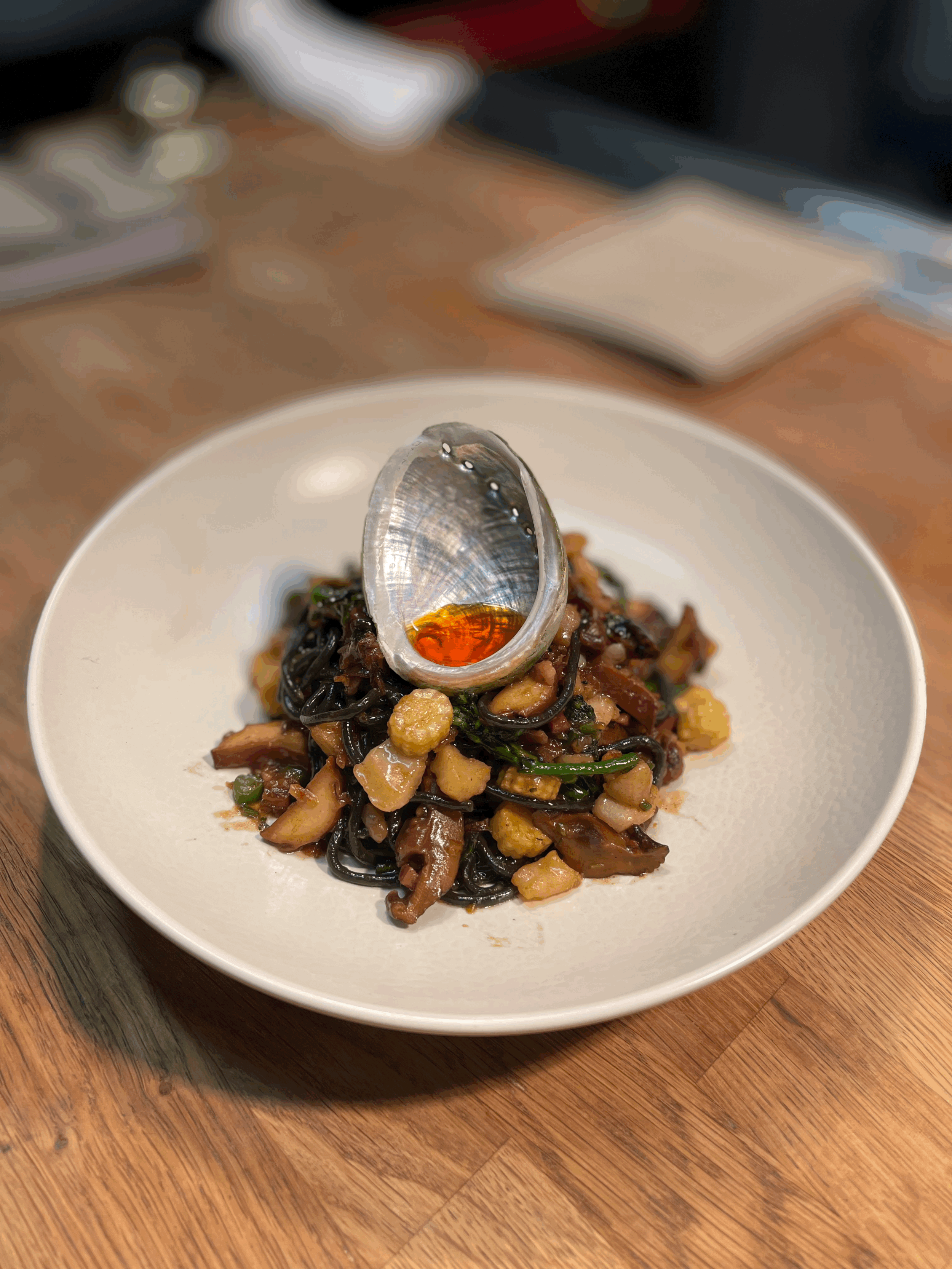Squid Ink Abalone
Ingredients:
1 kg green lip abalone
2 bulbs garlic, finely diced
50g ginger, finely diced
2 tbsp chicken stock concentrate
100g dried shiitake mushrooms
1 liter water
30g sugar
2 tbsp potato starch
30ml soy sauce
30ml Shaoxing wine
3 tbsp oyster sauce
5 baby corn
1 bunch broccolini
100g squid ink pasta
1 tbsp chili oil
Method:
Prepare the braising stock:
In a large pot, fry the finely diced garlic and ginger until fragrant. Add the whole abalone (after removing the organ and washing), along with the oyster sauce, salt, and sugar. Cook for 1 minute, stirring occasionally.Deglaze and simmer:
Pour in the Shaoxing wine, then add the chicken stock concentrate, dried shiitake mushrooms, and water. Bring to a simmer, cover with a lid, and let cook for about 5 hours, or until the abalone is very tender. Check the abalone every hour by poking it with a fork to test tenderness.Thicken the sauce:
Once the abalone is tender, make a potato starch slurry by mixing 2 tbsp potato starch with a splash of water in a separate bowl. Stir the slurry into the braising liquid to thicken the sauce.Prepare the vegetables:
Remove the abalone and mushrooms from the braising liquid. Dice the abalone and mushrooms into thin strips. Blanch the broccolini, then chop it into small cubes. Dice the baby corn into cubes as well.Cook the pasta and vegetables:
In a pan, sauté the baby corn and broccolini until charred. Add the diced mushrooms and abalone along with a splash of the braising sauce (or "master sauce"). Cook together until well combined.Combine with pasta:
Cook the squid ink pasta according to package instructions. Once cooked, toss the pasta with the abalone and vegetable mixture. Mix well to combine.
Assembly:
Plate the dish by placing the squid ink pasta mixture in a bowl or plate. Garnish with an abalone shell (if available) and drizzle a little chili oil over the top for a touch of heat and color.
Story Behind the Dish:
Abalone has always been my favorite seafood, especially growing up when it was a special treat after doing well in school or achieving something big. I often had braised abalone in a fancy Chinese restaurant, where it was considered a delicacy. That experience stuck with me, and I've always wanted to find ways to incorporate abalone into my cooking.
This dish is a twist on the traditional Chinese-style braised abalone, designed to introduce it to a Western audience. By pairing it with squid ink pasta and shiitake mushrooms, I hope to bridge the gap and help more people enjoy this incredible seafood, just as I have since I was a child.
Traditional Chinese style Abalone



